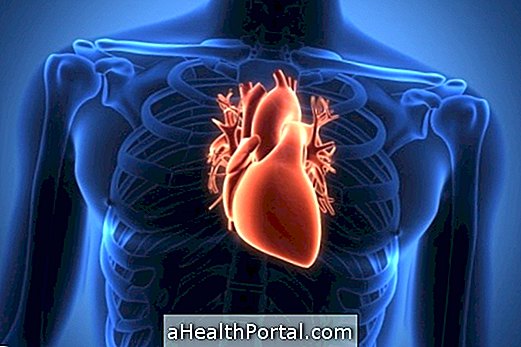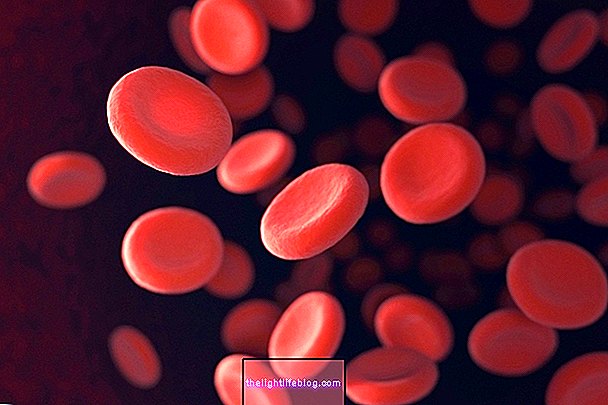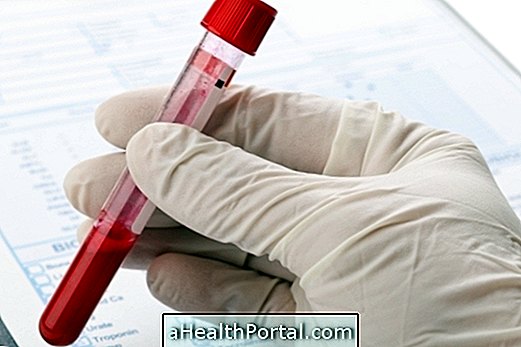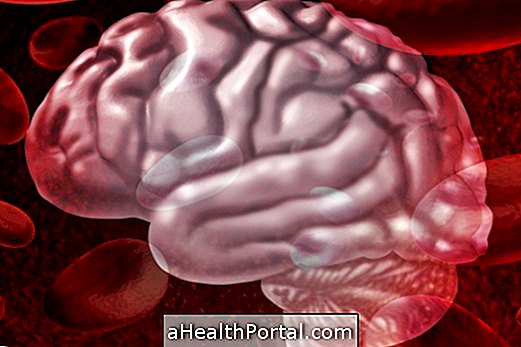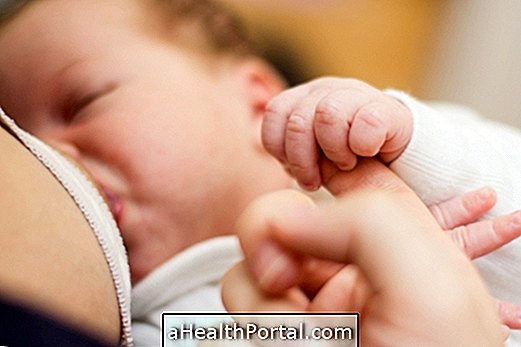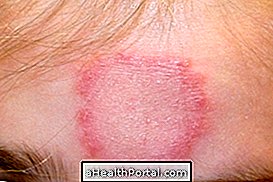Anemia is the decrease in hemoglobin levels in the blood, which is the protein located inside the red blood cells, responsible for carrying oxygen to the tissues.
It can arise from a variety of causes, such as a vitamin-poor diet, bleeding, bone marrow malfunction, autoimmune diseases, or chronic diseases, such as arthritis or kidney failure.
Anemia is detected through a blood count that identifies hemoglobin levels in the blood, which should preferably be above 13 g% in men, 12 g% in women and 11 g% in pregnant women as of the second trimester, since in this period the blood tends to get more dilute. Learn more about the tests that confirm anemia.
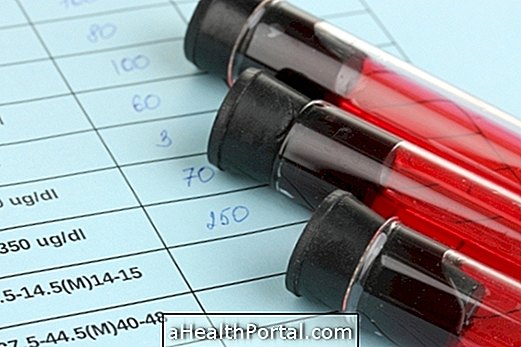
The anemia can be mild or even profound, when the hemoglobin is below 7g%, and this depends not only on the cause, but also on the severity of the disease and the response of the body of each person.
Main causes of anemia
Some of the leading causes of anemia include:
1. Lack of vitamins
To properly produce red blood cells, your body needs essential nutrients. The lack of them causes the so-called deficient anemias, which are;
- Anemia due to lack of iron in the body, called iron deficiency anemia, which may be caused by a diet with little iron, especially in childhood, or due to bleeding in the body, which may be imperceptible, such as by gastric ulcer or varicose veins in the intestine, for example ;
- Anemia due to lack of vitamin B12 and folic acid, called megaloblastic anemia, happens due to the low consumption of these substances in the diet. Vitamin B12 is consumed in meat or animal derivatives such as eggs, cheese and milk. Folic acid is found in meats, green vegetables, beans or grains, for example.
The absence of these nutrients is detected through blood tests requested by the doctor. Generally, this type of anemia worsens gradually, and as the body manages to adapt to losses for some time, the symptoms may take time to appear.
Watch the following video and check out nutritionist Tatiana Zanin's guidelines on what to eat in case of anemia:

2. Defects in the bone marrow
Bone marrow is where the blood cells are produced, so if it is affected by any disease, it can compromise the formation of red blood cells and lead to anemia.
This type of anemia, also called aplastic anemia or medullary anemia, can have several causes, including genetic defects, intoxication by chemical agents such as solvents, bismuth, pesticides, tar, anticonvulsants, exposure to ionizing radiation, HIV infections, parvovirus B19, Epstein Barr virus or by diseases such as paroxysmal notch hemoglobinuria, for example. However, in some rare cases, the cause may not be identified.
Read more about what it is and what to do in case of aplastic anemia.
Bleeding
Hemorrhages are serious since the loss of blood represents the loss of oxygen and nutrients to the organs of the body.
Some of the most common causes of bleeding can be caused by injuries to the body, injuries due to accidents, very massive menstruation or diseases, such as cancer, liver disease, varicose veins or ulcers.
In some cases, the bleeding is not visible, and it is necessary to perform exams such as endoscopy or colonoscopy to identify. Know what can cause blood in the stool.
4. Genetic diseases
Hereditary diseases, which are passed through DNA, can cause changes in hemoglobin production, either in quantity or quality. Generally, these changes result in destruction of the red blood cells.
Not always the bearer of these genetic defects will present a worrying anemia, however, in some cases can be serious and significantly compromise health. The main anemias of genetic origin are those that affect the structure of hemoglobin, also called hemoglobinopathies:
- Sickle cell anemia : is a genetic and inherited disease in which the body produces hemoglobins with altered structure, therefore, causes defective red blood cells, which can take the form of a sickle, making it difficult to carry oxygen in the blood. Check out the symptoms and treatment of sickle cell anemia.
- Thalassemia : is also a genetic disease that causes changes in the proteins that form hemoglobin, forming altered red blood cells that are destroyed in the bloodstream. There are different types of thalassemia, with varying severities, learn more on how to identify thalassemia.
Although these are the most known, there are hundreds of other hemoglobin defects that can result in anemia, such as methemoglobinemia, unstable hemoglobin, or hereditary persistence of fetal hemoglobin, for example, that are identified by genetic testing indicated by the hematologist.
5. Autoimmune diseases
Autoimmune hemolytic anemia (AHAI) is an immunologically-caused disease that arises when the body produces antibodies that attack the red blood cells themselves.
Although it is not yet known their exact causes, it is known that they can be precipitated by other health conditions, such as viral infections, presence of other immune diseases or tumors, for example. This type of anemia is not usually hereditary and is not transmitted from one person to another.
Treatment consists mainly in the use of drugs to regulate the immune system, such as corticoids and immunosuppressants. Learn more about how to identify and treat autoimmune hemolytic anemia.

6. Chronic diseases
Chronic diseases, such as tuberculosis, rheumatoid arthritis, rheumatic fever, osteo-myelitis, Crohn's disease, or multiple myeloma, for example, cause an inflammatory reaction in the body that can result in anemia, due to premature death and changes in the production of red blood cells.
In addition, disease that causes changes in hormones that stimulate the production of red blood cells may also be the cause of anemia, including hypothyroidism, androgen reduction or drop in levels of the hormone erythropoietin, which may be reduced in kidney disease.
This type of change usually does not cause severe anemia, and can be resolved by treating the disease that caused the anemia.
7. Other causes
Anemia can also occur due to infections, such as in viral or bacterial infections, as well as may occur due to the use of certain medications, such as anti-inflammatories, antibiotics or anticoagulants, or by the action of substances such as excess alcohol or benzenes, for example.
Pregnancy can lead to anemia, primarily due to weight gain and increased circulation in the bloodstream. See also: Anemia in Pregnancy.
Causes of anemia in the elderly
The elderly are more likely to develop anemia, mainly due to changes in diet, which may be lacking in nutrients, as chronic diseases are more common in the elderly and also due to digestive ulcers, intestinal varices or cancer, for example.
In addition, there are changes that occur in the body with advancing age, which include less activity of the bone marrow to produce red blood cells or existence of more fragile blood cells.
Symptoms of anemia
The symptoms that indicate anemia, vary with the type of anemia, however it is common to appear:
- Tiredness;
- Very sleepy;
- Pale skin;
- Lack of strength;
- Shortness of breath;
- Feet and cold hands.
In some cases, especially when it is caused by severe bleeding or when it is below 7g%, anemia can cause serious symptoms such as falling pressure, fast heartbeat, or fainting, requiring prompt medical attention.
However, at an early stage the anemia can be mild and the individual does not perceive the signs and symptoms, so only blood tests can confirm the presence of anemia. Read more about symptoms in: Symptoms of anemia.


